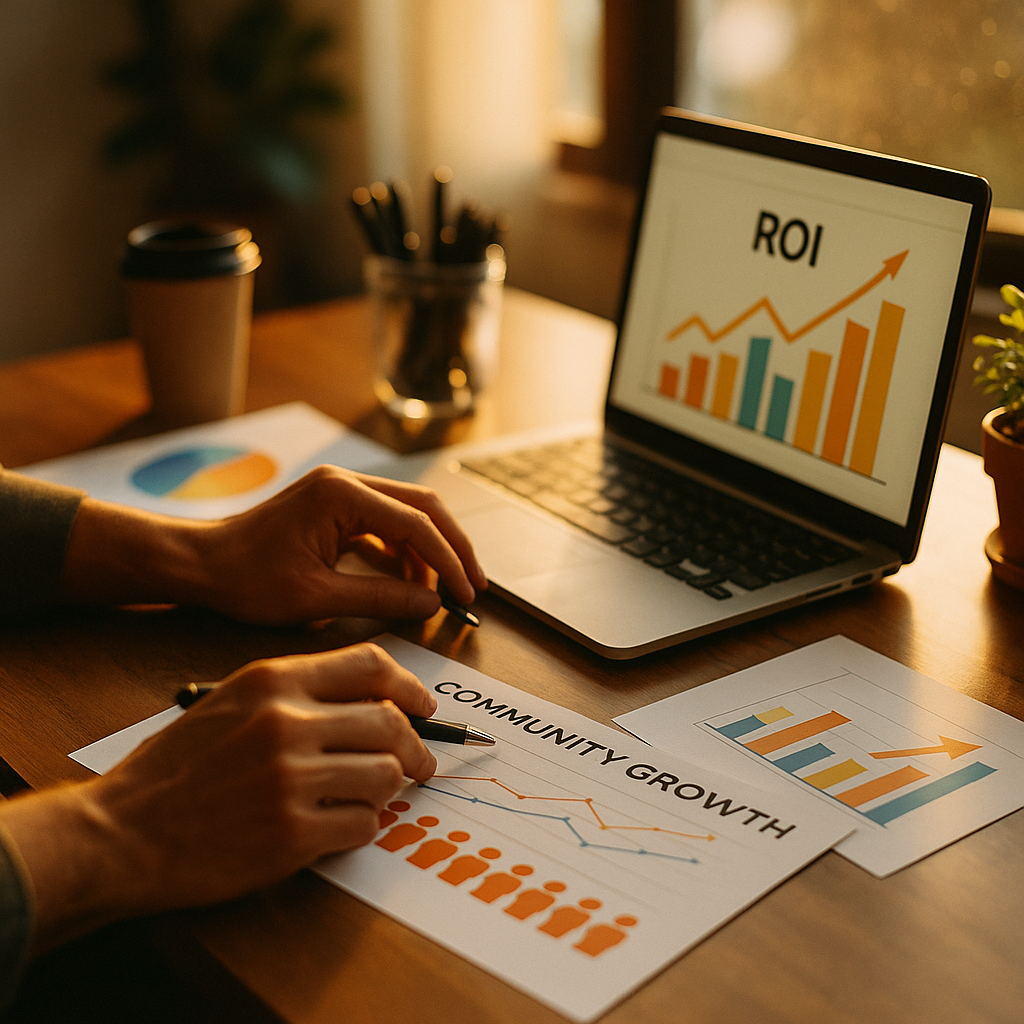The ROI of a brand community and forum is more crucial than ever for organizations aiming to build loyalty and drive growth. Accurately measuring this ROI helps marketers and community managers allocate resources effectively. Discover how a structured measurement framework can reveal the true value of your digital communities.
Understanding Brand Community ROI Metrics
Measuring the ROI of a brand community and forum involves quantifying both tangible and intangible benefits. Traditional marketing ROI focuses on direct revenue, but brand communities deliver value in deeper ways. These forums foster peer-to-peer support, product advocacy, and innovative feedback, which in turn can reduce costs, enhance brand visibility, and drive customer retention. Establish clear KPIs such as:
- Customer Lifetime Value (CLV): Track whether active community members spend more over time compared to non-members.
- Net Promoter Score (NPS): Gauge increases in your community’s willingness to recommend your brand.
- Support Deflection Volume: Monitor forums for how many support issues are resolved without needing formal customer support intervention.
- Content Engagement: Assess participation by examining posts, replies, and time spent within the community platform.
These metrics lay the foundation for assessing the financial and qualitative impact of your digital ecosystem.
Data Gathering: Key Inputs for Informed ROI Analysis
Accurate ROI measurement relies on robust data. Prioritize integrating analytics platforms that track user activity and conversions linked to the community and forum. Collect data on:
- Traffic sources: Determine if community content drives organic search traffic or direct visits.
- User profiles: Segment active members, lurkers, and new joiners to identify trends and high-value participants.
- Referral conversions: Trace if referrals originating from the community result in sales or sign-ups.
- Cost savings: Calculate the reduction in customer support hours thanks to community-solved queries.
Combining quantitative data (like sales or converted leads) with qualitative insights (such as user testimonials or upvoted solutions) ensures your ROI analytics are comprehensive and actionable.
Linking Community Engagement to Business Outcomes
The next step is to connect engagement metrics to real business results. To demonstrate genuine ROI of a brand community and forum in 2025, map actions to outcomes. Consider these evidence-based approaches:
- Sales Impact: Attribute a percentage of sales uplift to users who participate or interact with your forum before purchase.
- Retention Lift: Compare renewal rates or repeat purchases between engaged and non-engaged user groups.
- Product Improvements: Track the number of product development ideas sourced directly from community threads that lead to new or improved offerings.
Documenting these links supports clear, evidence-driven conversations about the community’s business value, addressing both operational and strategic objectives.
Implementing a Repeatable ROI Framework
Having a repeatable, step-by-step ROI framework ensures consistency and clarity for stakeholders. Here’s a proven workflow:
- Define Objectives: Pinpoint why your brand community exists—is it support, innovation, advocacy, or education?
- Select Metrics: Assign relevant KPIs aligned with those objectives, using the metrics discussed previously.
- Set Baselines: Establish benchmarks for engagement, satisfaction, and cost savings before launching major initiatives.
- Analyze Trends: Use dashboards to visualize cause–effect patterns over time: for example, did a new forum feature increase engagement or reduce support tickets?
- Report with Context: Present findings to key leaders alongside qualitative stories and customer quotes to reinforce results.
This cycle can be refreshed quarterly or after significant community campaigns, enabling you to fine-tune community strategy as your brand evolves.
Maximizing the Value of Brand Community Insights
The data collected isn’t just for ROI calculations. Let these insights power decisions across your organization. Use community sentiment to shape marketing messages, leverage “voice of the customer” language in campaigns, or identify advocates for beta testing and testimonials. Modern businesses succeed when the community and forum influence multiple departments—breaking information silos and fostering a customer-centric culture.
Share regular success stories internally to sustain leadership buy-in. Encourage other teams, from product to support, to use forum discussions as a real-time feedback loop.
Common Challenges and Solutions in ROI Measurement
Even with a solid measurement framework, you’ll face obstacles. Key challenges in proving the ROI of a brand community and forum include:
- Attribution Complexity: It’s tough to isolate the community’s impact from other marketing channels. Employ advanced analytics and ask new joiners how they found your brand.
- Intangible Value: Brand sentiment or knowledge sharing may not immediately translate into revenue. Track proxies such as positive sentiment shifts or content shares.
- Data Silos: Data locked in one platform limits cross-department measurement. Use integratable analytics platforms so community data aligns with CRM and digital marketing tools.
By anticipating these hurdles, your team can proactively seek solutions and present a complete ROI narrative.
Conclusion
Measuring the ROI of a brand community and forum demands a data-driven, holistic approach. By aligning strategic objectives with clear metrics and consistent reporting, organizations can showcase and maximize the value of their thriving digital communities in 2025.
FAQs About Measuring the ROI of a Brand Community and Forum
- How often should community ROI be measured?
Ideally, community ROI should be tracked quarterly. However, after major initiatives or campaigns, conduct a special review to capture incremental changes. - What if my brand community is new and data is limited?
Start by establishing clear baselines with whatever activity you do have—such as first-time posts, sign-ups, or engagement rates. Use this as a foundation for growth measurement. - Can social listening tools help measure community ROI?
Absolutely. Social listening tools can capture sentiment, trending topics, and share of voice—helpful proxies for community impact, especially on brand perception. - What’s the most persuasive metric for executive buy-in?
Cost savings through support deflection and increased customer lifetime value are typically the most convincing figures for CEOs or CFOs, as they directly relate to the bottom line.
